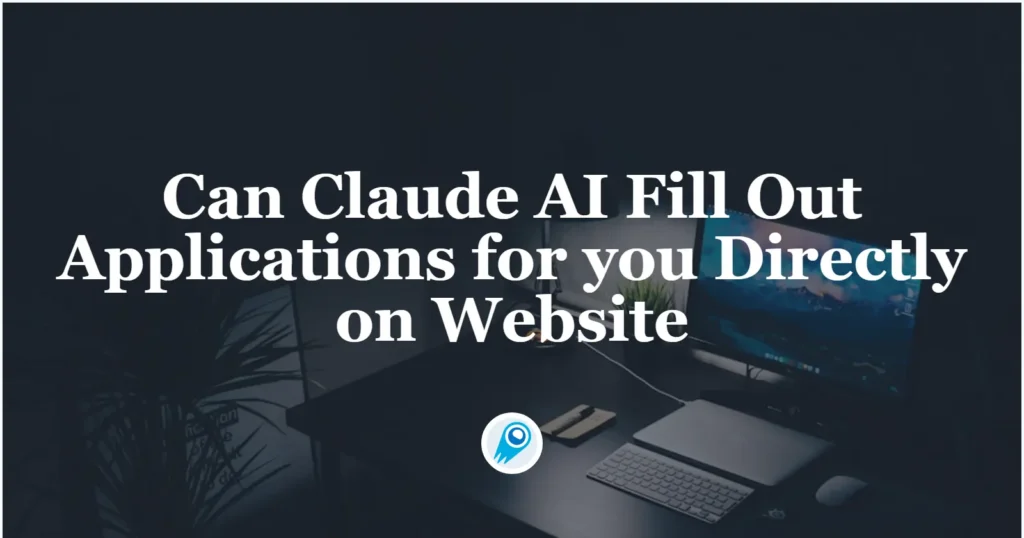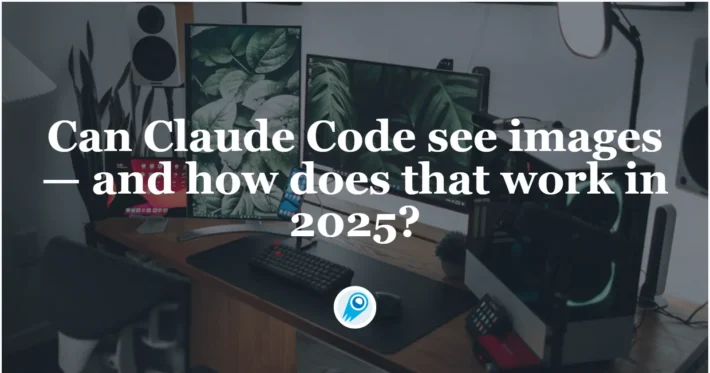Can Claude AI Fill Out Applications for you Directly on Website

Anthropic’s Claude AI has swiftly evolved from a conversational assistant into a powerful agent capable of interacting with digital interfaces as a human would. One of its most groundbreaking capabilities—filling out applications and forms directly on websites—promises to transform how businesses and individuals handle repetitive data-entry tasks.
Claude’s Origins and Ethical Foundations
Anthropic launched Claude in early 2023 as a safety-first alternative to existing large-language models (LLMs). Founded by former OpenAI researchers, Anthropic emphasized guardrails against harmful outputs and biased responses, positioning Claude as a trustworthy partner for content creation, research assistance, and decision support . Over successive model releases—Claude 2, Claude 3, and most recently the Claude 4 series—Anthropic has steadily improved reasoning, creativity, and ethical alignment.
Can Claude Fill Out Applications for you Directly on Website
Yes—Anthropic’s Claude AI can now autonomously fill out applications and other web forms for you using its Computer Use tool.
What is the “computer use” feature, and how does it work?
Claude’s “computer use” feature equips the model with screenshot capture and mouse/keyboard control, enabling it to perceive and interact with desktop environments and web interfaces autonomously. This capability is accessed via Anthropic’s API (with a special beta header) and is currently available for Claude 4, Claude 3.7 and Sonnet 3.5 models .
Screenshot and screen-understanding
When instructed to fill out an application, Claude AI first captures the current screen. It then applies its vision-language capabilities to identify form fields, buttons, and menus based on visual cues.
Mouse and keyboard emulation
Once the relevant input elements are located, Claude AIcan move the cursor, click on fields, and type text precisely—just as a human user would. It determines cursor movement by calculating pixel offsets, ensuring clicks on the correct interface elements .
How can Claude AI fill out applications directly on websites?
At its core, filling out applications involves a sequence of screen interactions: reading field labels, matching them to user-provided or stored data, and populating each field in order.
Available in public beta via the Anthropic API (models Claude 4 and 3.7 with the computer-use-2025-01-24 header, and Sonnet 3.5 with computer-use-2024-10-22). Users can prompt Claude with natural language, You simply send a natural-language prompt such as:
“Claude, please apply for this job listing by filling in my resume details, cover letter, and contact information on the company’s careers page.”
Claude AI will then:
- Navigate to the specified URL.
- Scroll and scan for form sections (e.g., “Personal Information,” “Experience,” “Upload Resume”).
- Click into each field and enter the appropriate text or upload files.
- Review the filled form and submit it or present a confirmation for user approval.
Automating file uploads
Beyond text entry, Claude AI can handle file dialogs—selecting and uploading documents such as resumes or transcripts—by interacting with the operating system’s file-picker windows. This extends its utility to application processes that require attachments.
Handling multi-page forms
Many applications span multiple pages or tabs. Claude tracks progress through each stage, clicking “Next” or “Continue” buttons and ensuring no mandatory fields are missed before final submission.
How Interactive Artifacts Expand Web Automation
Building No-Code Web Apps with Artifacts
On June 25, 2025, Anthropic debuted an enhanced Artifacts feature that transforms Claude from a passive assistant into an active no-code app developer. Users can now instruct Claude to generate custom web applications—complete with form interfaces—that run directly within the Claude UI. By describing desired functionality (“create a job application form with name, email, and resume upload fields”), Claude writes the code, hosts the app, and renders it interactively in real time .
Claude 4 Opus: A Leap in Autonomous Coding
Underpinning these interactive features is Claude Opus 4, one of the models in the Claude 4 family unveiled in May 2025. Opus 4 is specifically optimized for complex reasoning and coding tasks, enabling Claude to generate and debug multi-file codebases that power web forms and applications. Benchmarks from third-party developers highlight its ability to maintain context over lengthy sessions and produce production-ready code snippets.
Integrations and Web Knowledge via Research Mode
Complementing its coding prowess, Claude’s Research and Integrations capabilities allow it to fetch up-to-date information and incorporate real-time data into applications. With the Model Context Protocol and Google Workspace integration, Claude can pull user-specific data—such as calendar availability or document repositories—to pre-fill form fields or validate inputs dynamically.
What are the current limitations and challenges?
Despite its promise, Claude’s computer use feature remains experimental and has notable caveats.
Reliability and error-handling
Early adopters report occasional misclicks, incomplete field detection, or failure to handle dynamically loaded form components . Such errors require robust validation steps—Claude AI can be instructed to screenshot its completed form for user review before submission, but this adds manual oversight.
Performance and cost
Operating at the pixel-level is computationally intensive. Running Claude’s computer-use workflows incurs higher API usage costs and longer execution times compared to text-only interactions. Organizations must balance these overheads against productivity gains.
Security and privacy concerns
Granting any AI model remote control of a desktop environment raises security questions. Claude AI only operates with explicit user consent and API credentials, but best practices dictate isolating sensitive data and using least-privilege access to mitigate risks.
How is Claude’s form-filling capability evolving?
Anthropic continues to refine and expand Claude’s tool-use ecosystem, with two major developments in 2025 alone:
Extended thinking with tool use in Claude 4
The recently released Claude 4 models introduce “extended thinking,” which interleaves internal reasoning with external tool calls—such as web search or computer use—within a single response. This allows Claude AI to fetch up-to-date information, decide which fields to fill based on context, and dynamically adjust its actions .
Built-in web-search integration
Since May 27, 2025, Claude’s free plan includes real-time web search powered by Brave Search. When filling out applications that require current data—like company names or industry codes—Claude AI can source and cite accurate details on the fly, reducing reliance on stale user inputs.
Getting Started
CometAPI provides a unified REST interface that aggregates hundreds of AI models—including Claude AI family—under a consistent endpoint, with built-in API-key management, usage quotas, and billing dashboards. Instead of juggling multiple vendor URLs and credentials.
Developers can access Claude Sonnet 4 API (model: claude-sonnet-4-20250514 ; claude-sonnet-4-20250514-thinking) and Claude Opus 4 API (model: claude-opus-4-20250514; claude-opus-4-20250514-thinking)etc through CometAPI. . To begin, explore the model’s capabilities in the Playground and consult the API guide for detailed instructions. Before accessing, please make sure you have logged in to CometAPI and obtained the API key. CometAPI’ve also added cometapi-sonnet-4-20250514 and cometapi-sonnet-4-20250514-thinking specifically for use in Cursor.
New to CometAPI? Quick Start and unleash Claude 4 on your toughest tasks.If you have any questions about the call or have any suggestions for us, please contact us through social media and email address support@cometapi.com.
We can’t wait to see what you build. If something feels off, hit the feedback button—telling us what broke is the fastest way to make it better.
Conclusion
Anthropic’s Claude AI has transcended its role as a conversational partner to become an autonomous digital agent capable of completing application forms and other web-based tasks with human-like precision. While still maturing, the computer-use feature—bolstered by extended reasoning and real-time web search—offers compelling benefits in productivity, accuracy, and accessibility. As Claude’s capabilities continue to advance, organizations and individuals alike will need to adapt processes, address ethical concerns, and redefine the nature of work in an increasingly automated world.


